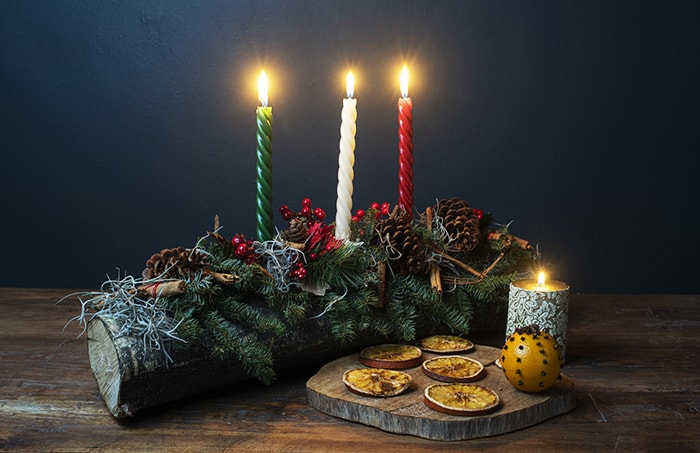The Origins of Christmas
December 16, 2022
Do you ever wonder where some of our Christmas traditions and celebrations originate? Many of us have come to understand Christmas as the birth of Christ; when in reality, it also stemmed from many different beliefs around the world. Christmas traditions have been revealed to have many different origins. Some traditions were celebrated thousands of years before we celebrated what we know as Christmas.
Christmas was not the original winter celebration or a Christian holiday. The original celebration was Yule: a Pagan holiday. Yule was actually celebrated thousands of years before Christmas, dating back to the fifth century. Author of The Viking Spirits, Daniel McCoy, wrote, “The second critical festival was Yule at midwinter – late December and January – Which, with the arrival of Christianity, was converted into Christmas. Offerings were made to the gods in hopes of being granted bountiful harvests in the coming growing season in return.” Despite its age, Yule is celebrated during the winter solstice, the shortest day of the year. Yule is the time to celebrate the return of the sun and the birth of a new year. Yule is 12 days long, starting on December 21st and ending on January 1st. It was celebrated by gift giving, feasting, and yule logs. Sounds like Christmas, right?
Many people like to leave carrots for reindeer and cookies and milk for Santa on Christmas Eve. According to Daniel Mcoy, this tradition is a little different from how it used to be. During the Yule celebration, children would leave sugar and hay for an eight-legged horse named Sleipnir. For leaving the offerings, they hoped that Odin, the Norse king of gods and war, would leave them gifts as a thank you. While this is not milk and cookies, it’s still similar to what we do today, leaving something in hopes of a gift in return.
Decorating christmas trees was not the only thing people used to do with trees. Originally, pagans created and decorated yule logs for celebration. A yule log is a log from a tree that was cut and decorated. Then, the yule logs were burned on the eve, the 24th, with prayers to gods, hopes of good luck, and riches.However, Celtics and Vikings burned a yule log for all 12 days. According to Cosmopolitin.com, they did this to keep evil spirits away and encourage the sun to return and ultimately make the days longer. They kept this log burning the entire time as letting it burn out would bring bad luck. Another tradition performed by Pagans that is similar is decorating evergreen trees with things such as: food, carvings, and offerings. According to VoiceAndVisionInc.org, this would encourage the tree spirits to return in the spring. From the evergreen trees, mistletoe was hung by pagans as a symbol that a god was born. Christmastreehistory.net says that the evergreen itself was a symbol of hope for the coming of Spring. This would eventually evolve into the Christian tradition of decorating the tree and hanging of the mistletoe.
The origins of Santa can be traced back to the third century. However, it wasn’t Santa; it was a Christian monk named St. Nicholas. According to History.com, St. Nicholas was born around 280 A.D., in Myra, Turkey. He was known to have inherited a lot of money and would travel to help the poor and ill. “ One of the best-known Saint Nicholas stories is the time he saved three poor sisters from being sold into slavery or prostitution by their father by providing them with a dowry so that they could be marrie,” said History.com. His popularity grew, he became known as a saint of children and sailors.
Many holidays and traditions stem from many different areas around the world. Now you know how these Christian traditions originated and that they do have symbolic meaning. No matter how small, these traditions hold a lot of history from the generations way before our time.

